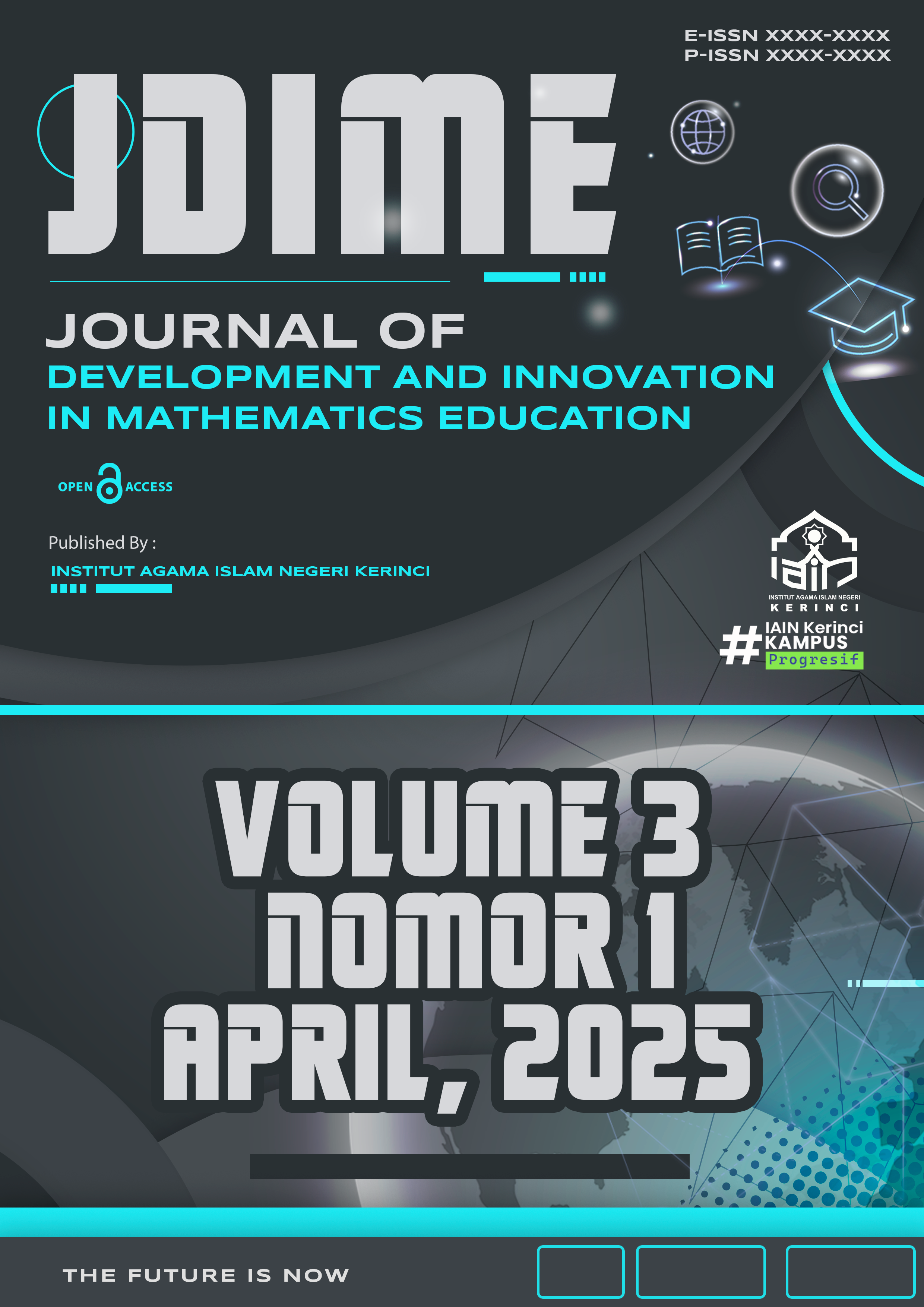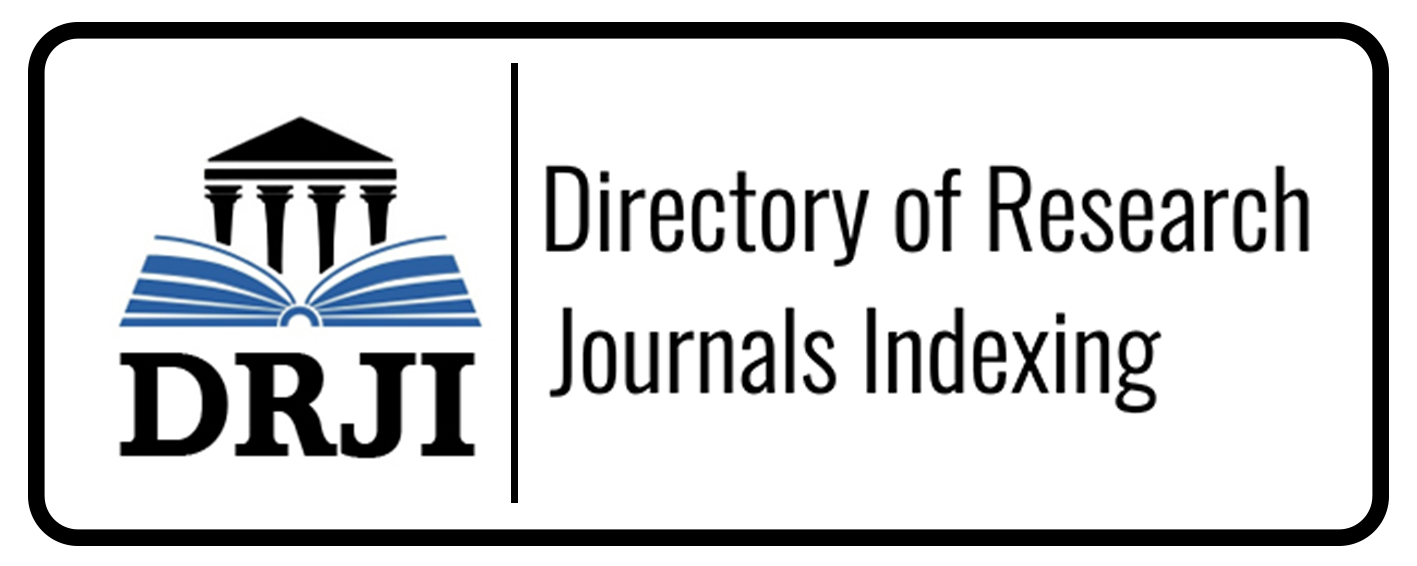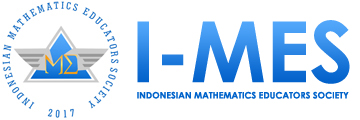Enhancing Conceptual Understanding and Learning Interest in Geometry through Augmented Reality-Based Learning Media
Abstract
This study aims to develop Augmented Reality (AR)-based learning media in geometry courses to enhance students' conceptual understanding and learning interest. This research uses a Research and Development (R&D) methodology with the ADDIE model (Analysis, Design, Development, Implementation, Evaluation) for media development procedures. The subjects of the study involved students from the Mathematics Education program at a university in Indonesia. Data were collected through validation sheets and effectiveness tests, with validity and reliability tested using paired sample t-tests. The results showed that the AR-based learning media developed received an excellent validation score (4.2/5) from experts and demonstrated significant effectiveness in improving conceptual understanding of geometry (t = 15.23, p < 0.05) as well as students' learning interest (t = 12.76, p < 0.05). The use of AR in geometry learning was found to increase student engagement and make abstract concepts easier to understand. These findings are consistent with previous studies showing that AR can enhance the quality of learning, particularly in complex subjects such as geometry. This study provides empirical evidence regarding the potential of AR in higher education and suggests broader implementation across various disciplines to improve students' understanding and motivation.
Downloads
References
Al-Mousa, M., Alshammari, M., & Alshahrani, H. (2019). Augmented reality in education: A review. International Journal of Educational Technology in Higher Education, 16(1), 1-19. https://doi.org/10.1186/s41239-019-0172-0
Azuma, R. T. (2019). A survey of augmented reality. Presence: Teleoperators and Virtual Environments, 6(4), 355–385. https://doi.org/10.1162/105474699566869
Baharuddin, A. (2019). Pengaruh teknologi terhadap minat belajar mahasiswa. Jurnal Teknologi Pendidikan, 18(2), 135-145.
Borasi, D., Lemay, D., & Anderson, A. (2017). Exploring the impact of technology-enhanced teaching strategies on student engagement and achievement. Journal of Educational Technology Systems, 45(2), 214-229. https://doi.org/10.1177/0047239517745354
Bower, M., Howe, C., McCredie, N., Robinson, A., & Grover, D. (2017). Augmented reality in education – Cases, places, and potentials. Educational Media International, 54(2), 111–122. https://doi.org/10.1080/09523987.2017.1371948
Branch, R. M. (2009). Instructional design: The ADDIE approach. Springer Science & Business Media.
Cai, S., & Wang, Z. (2020). The effect of augmented reality on student learning: A meta-analysis. Computers & Education, 148, 103785. https://doi.org/10.1016/j.compedu.2019.103785
Deci, E. L., & Ryan, R. M. (1985). Intrinsic motivation and self-determination in human behavior. Springer Science & Business Media.
George, D., & Mallery, P. (2016). IBM SPSS statistics 23 step by step: A simple guide and reference. Pearson Education.
Griffiths, M., Hunt, T., & Kibble, T. (2019). The role of augmented reality in the teaching of geometric concepts. International Journal of Mathematical Education in Science and Technology, 50(6), 836-852. https://doi.org/10.1080/0020739X.2019.1591450
Hamid, S., Bakar, R., & Zainuddin, S. (2021). Augmented reality as a tool for enhancing the understanding of geometrical concepts. International Journal of Education in Mathematics, Science, and Technology, 9(3), 342–357. https://doi.org/10.46328/ijemst.1207
Hidayat, W., Setiawan, D., & Lestari, M. (2020). Pengaruh media pembelajaran terhadap pemahaman konsep geometri. Jurnal Pendidikan Matematika Indonesia, 24(1), 45-56.
Huang, J., Zhuang, Z., & Chen, H. (2021). Augmented reality applications in education: A survey. Journal of Educational Technology & Society, 24(2), 126-138.
Huang, Y. M., Lin, Y. T., & Cheng, S. C. (2016). Augmented reality in education: A review of the state of the art. Educational Technology & Society, 19(2), 101-115.
Indriani, R., Rahmawati, F., & Purnama, M. (2020). Implementasi teknologi augmented reality dalam pembelajaran matematika di Indonesia. Jurnal Teknologi Pendidikan, 22(1), 1-12.
Johnston, J., & Hunter, J. (2018). The impact of technology on learning: A case study. Journal of Educational Research, 18(4), 215-220.
Khoo, J., Darmawan, H., & Alamsyah, R. (2020). Implementasi augmented reality dalam pembelajaran geometri di perguruan tinggi. Jurnal Teknologi Pendidikan, 17(3), 101-110.
Kurniawan, D., Wahyuni, S., & Sari, M. (2020). Pengembangan media pembelajaran berbasis augmented reality untuk meningkatkan hasil belajar matematika pada peserta didik SMP. Jurnal Pendidikan Teknologi dan Kejuruan, 26(2), 134-142.
Mayer, R. E. (2005). The Cambridge handbook of multimedia learning. Cambridge University Press.
Nouri, J., Zhi, H., & Shid, A. (2019). The effect of augmented reality on learning outcomes: A meta-analysis. Educational Technology Research and Development, 67(4), 767-785.
Piaget, J. (1973). To understand is to invent: The future of education. Viking Press.
Piller, I., Smith, A., & Alvarado, F. (2018). The impact of augmented reality on student learning outcomes. International Journal of Educational Technology in Higher Education, 15(1), 1-14. https://doi.org/10.1186/s41239-018-0106-6
Setiawan, D., Lestari, M., & Putra, R. (2018). Faktor-faktor yang memengaruhi minat belajar mahasiswa pada mata kuliah geometri. Jurnal Pendidikan Matematika, 18(2), 123-134.
Sugiyono, M. (2017). Metode penelitian pendidikan: Pendekatan kuantitatif, kualitatif, dan R&D. Alfabeta.
Wang, Y. (2015). The development and validation of a survey instrument for assessing the effectiveness of mobile learning in K-12 education. Computers in Human Behavior, 51, 123-133. https://doi.org/10.1016/j.chb.2015.03.041
Wu, H. K., Lee, S. W. Y., Chang, H. Y., & Liang, J. C. (2013). Current status, opportunities, and challenges of augmented reality in education. Computers & Education, 62, 41-49.
Zhou, J., Chen, C. M., & Li, Z. (2020). The impact of augmented reality in education: A systematic review of research from 2010 to 2019. Educational Research Review, 15, 111-124. https://doi.org/10.1016/j.edurev.2020.100367
Copyright (c) 2025 Asmaul Husna, Irma Risdiyanti, Yufitri Yanto, Ida Hamidah, Rhomiy Handican

This work is licensed under a Creative Commons Attribution 4.0 International License.



























 JDIME: Journal of Development and Innovation in Mathematics Education (e-ISSN
JDIME: Journal of Development and Innovation in Mathematics Education (e-ISSN 
